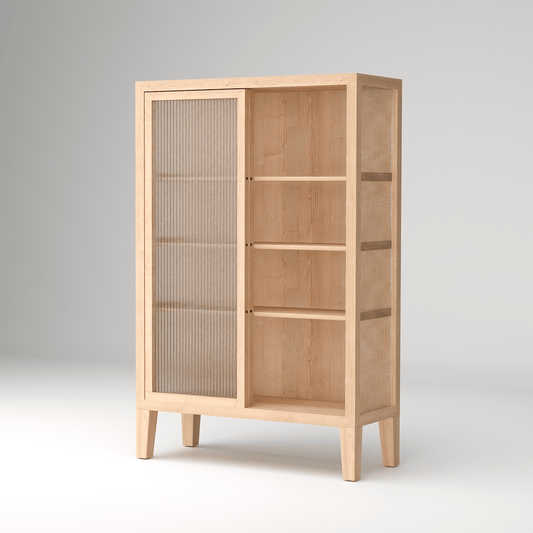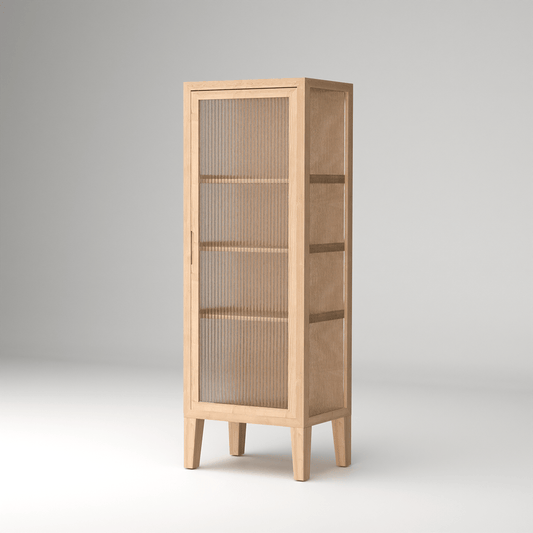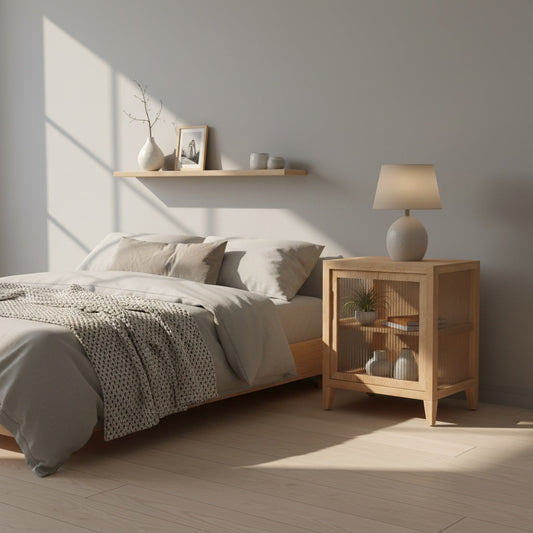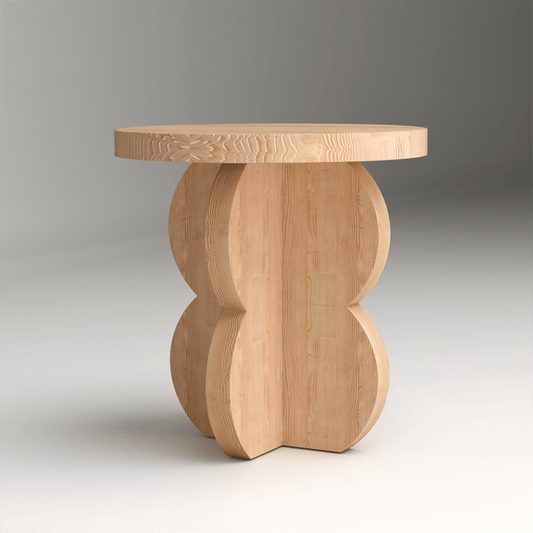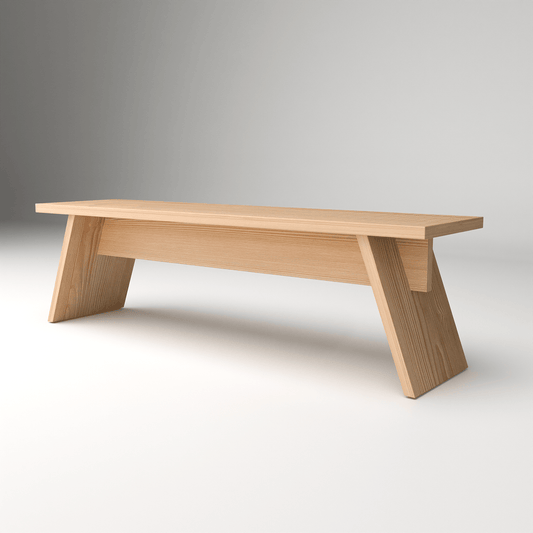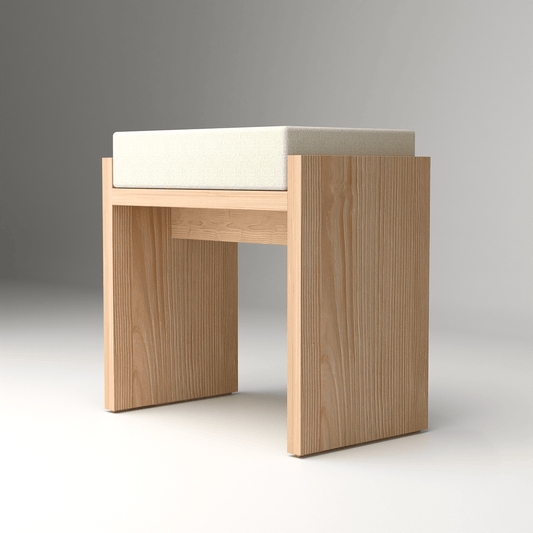The environmental impact of our furniture choices extends far beyond our immediate living spaces, influencing forest ecosystems, carbon cycles, biodiversity, and climate patterns across the globe. As we become increasingly aware of our individual role in addressing climate change, the decision to choose sustainable wood furniture emerges as one of the most impactful choices we can make for both our homes and our planet.
At A Good Life, we've witnessed firsthand how sustainable wood furniture choices create ripple effects that extend from individual homes to global environmental systems. Our commitment to using reclaimed and responsibly sourced pine wood demonstrates how conscious consumer choices can drive positive environmental change while creating beautiful, functional living spaces.
Understanding the Full Environmental Lifecycle
To truly appreciate the environmental impact of sustainable wood furniture, we must examine the complete lifecycle from forest to home and beyond.
Forest Impact: The Beginning of the Story
Sustainable Forestry Practices: Choosing furniture from responsibly managed forests supports practices that maintain forest health, biodiversity, and regenerative capacity.
Carbon Sequestration: Sustainable forests actively remove CO2 from the atmosphere, with mature trees storing significant amounts of carbon in their wood structure.
Biodiversity Protection: Responsible forest management maintains habitat for countless species while providing renewable resources.
Soil Health: Sustainable forestry practices protect soil quality and prevent erosion that can damage entire watersheds.
Water Cycle Maintenance: Healthy forests regulate water cycles, preventing floods and droughts while filtering groundwater.
Manufacturing Impact: Processing with Purpose
The way wood is processed into furniture has dramatic environmental implications:
Energy Consumption: Sustainable manufacturers prioritize renewable energy and efficient processes that minimize fossil fuel dependence.
Chemical Usage: Natural finishes and adhesives eliminate toxic runoff and indoor air pollution.
Waste Management: Zero-waste production methods utilize every part of the tree, from furniture to biomass energy.
Water Conservation: Responsible manufacturers minimize water usage and prevent contamination of local water sources.
Transportation Efficiency: Local sourcing and production reduce transportation-related emissions.
Our Pinewood Cabin Style Tissue Holder exemplifies sustainable manufacturing principles, crafted from responsibly sourced pine using traditional techniques that minimize environmental impact while creating a functional piece that serves daily needs for decades.
Carbon Impact: Wood as Climate Solution
Wood furniture plays a unique role in climate change mitigation through its ability to store carbon long-term while supporting forest regeneration.
The Carbon Storage Advantage
Active Carbon Sequestration: Trees absorb CO2 from the atmosphere as they grow, converting it into the cellulose and lignin that form wood structure.
Long-term Storage: Wood furniture continues storing this carbon for decades or centuries, preventing its release back into the atmosphere.
Renewable Cycle: Sustainable forestry ensures that new trees are planted to continue the carbon absorption cycle.
End-of-life Benefits: When wood furniture eventually reaches end-of-life, it can be composted or used for biomass energy, returning carbon to natural cycles.
Comparing Carbon Footprints
Wood furniture has a significantly lower carbon footprint compared to alternatives:
-
Steel furniture: Requires energy-intensive mining and processing
-
Plastic furniture: Derived from fossil fuels with high production emissions
-
Concrete: Cement production is a major source of global CO2 emissions
-
Aluminum: Energy-intensive extraction and processing create substantial emissions
Waste Reduction Through Sustainable Choices
Sustainable wood furniture dramatically reduces waste throughout its lifecycle compared to conventional alternatives.
Production Waste Minimization
Efficient Design: Sustainable manufacturers design products to maximize material utilization and minimize offcuts.
Waste Stream Utilization: Sawdust, shavings, and small pieces are used for other products or biomass energy.
Packaging Innovation: Minimal, recyclable packaging reduces waste and transportation volume.
Quality Focus: Higher quality construction reduces defect rates and waste from rejected products.
Consumer Waste Reduction
Longevity: Well-made wood furniture lasts for generations, eliminating frequent replacement waste.
Repairability: Wood furniture can be maintained, repaired, and refinished rather than discarded.
Adaptability: Quality pieces can be repurposed for different uses as needs change.
Resale Value: Durable wood furniture retains value and can be sold rather than discarded.
For kitchen organization that embodies waste reduction principles, consider our Handmade Pine Wood Napkin Holder. This piece demonstrates how sustainable design creates products that serve their function beautifully while minimizing environmental impact through longevity and natural materials.
Biodiversity Impact: Supporting Ecosystem Health
Sustainable wood furniture choices have profound implications for biodiversity conservation and ecosystem health.
Forest Ecosystem Support
Habitat Preservation: Sustainable forestry maintains diverse habitats for wildlife while providing renewable resources.
Species Protection: Responsible harvesting practices protect endangered tree species and maintain genetic diversity.
Ecosystem Services: Healthy forests provide water filtration, air purification, and climate regulation services.
Wildlife Corridors: Sustainable forest management maintains connectivity between habitats, supporting animal migration and breeding.
Avoiding Destructive Practices
Choosing sustainable wood furniture helps avoid:
-
Clear-cutting: Destructive harvesting that eliminates entire ecosystems
-
Illegal logging: Practices that destroy protected forests and threaten endangered species
-
Monoculture plantations: Single-species forests that lack biodiversity and ecosystem resilience
-
Old-growth destruction: Harvesting of irreplaceable ancient forest ecosystems
Water Impact: Protecting Aquatic Systems
The production and sourcing of wood furniture has significant implications for water quality and aquatic ecosystems.
Sustainable Water Practices
Chemical Avoidance: Natural finishes and adhesives prevent toxic runoff into waterways.
Erosion Prevention: Sustainable forestry practices protect soil and prevent sedimentation of streams and rivers.
Wetland Protection: Responsible forest management maintains wetland areas that filter water and support aquatic life.
Water Conservation: Efficient manufacturing processes minimize water usage and prevent waste.
Aquatic Ecosystem Protection
Sustainable wood furniture choices help protect:
-
Stream quality: Preventing chemical contamination from furniture production
-
Fish habitats: Maintaining clean water and stable stream banks
-
Groundwater: Avoiding contamination from toxic finishes and adhesives
-
Coastal areas: Preventing runoff that creates dead zones in oceans and lakes
Air Quality Impact: Indoor and Outdoor Benefits
Sustainable wood furniture provides air quality benefits both indoors and in the broader environment.
Indoor Air Quality
No Off-gassing: Natural wood and finishes don't release harmful chemicals into indoor air.
Humidity Regulation: Wood naturally moderates indoor humidity levels, supporting respiratory health.
Chemical Avoidance: Sustainable finishes eliminate exposure to volatile organic compounds (VOCs).
Allergen Reduction: Natural materials are less likely to trigger allergic reactions than synthetic alternatives.
Outdoor Air Quality
Forest Air Purification: Sustainable forests continue removing pollutants from the atmosphere.
Reduced Industrial Emissions: Lower-impact manufacturing reduces air pollution from furniture production.
Transportation Reduction: Local sourcing minimizes emissions from shipping and transportation.
Chemical Elimination: Natural finishes prevent release of toxic compounds into the atmosphere.
Soil Health and Land Use Impact
Sustainable wood furniture choices support healthy soil systems and responsible land use practices.
Soil Conservation Benefits
Erosion Prevention: Forest root systems stabilize soil and prevent erosion.
Nutrient Cycling: Sustainable forests maintain natural nutrient cycles that support soil health.
Organic Matter: Fallen leaves and branches from managed forests contribute to soil organic matter.
Microbial Health: Diverse forest ecosystems support healthy soil microbial communities.
Land Use Efficiency
Renewable Resource: Forests can be harvested sustainably while maintaining ecosystem functions.
Multiple Benefits: Forests provide timber, wildlife habitat, recreation, and ecosystem services simultaneously.
Carbon Storage: Forest soils store significant amounts of carbon in addition to tree biomass.
Watershed Protection: Forested watersheds provide clean water and flood control benefits.
Our Solid Wood Multipurpose Shelf with Drawer demonstrates how sustainable furniture can maximize functionality while minimizing land use impact, providing both open storage and concealed organization in a single piece that serves multiple needs efficiently.
Global Climate Impact: Local Choices, Global Effects
Individual furniture choices contribute to global climate patterns and international environmental efforts.
Climate Change Mitigation
Carbon Sequestration: Wood furniture stores carbon that would otherwise contribute to atmospheric CO2.
Forest Preservation: Demand for sustainable wood supports forest conservation efforts worldwide.
Renewable Energy: Wood waste can be used for biomass energy, reducing fossil fuel dependence.
Green Building: Sustainable wood furniture supports green building practices and LEED certification.
International Environmental Goals
Sustainable wood furniture choices support:
-
Paris Climate Agreement: Contributing to national carbon reduction goals
-
UN Sustainable Development Goals: Supporting responsible consumption and forest conservation
-
REDD+ Programs: Reducing emissions from deforestation and forest degradation
-
International Forest Agreements: Supporting global forest conservation efforts
Economic Environmental Benefits
The environmental benefits of sustainable wood furniture create economic value that supports continued conservation efforts.
Environmental Economics
Ecosystem Services: Forests provide billions of dollars in ecosystem services annually.
Carbon Markets: Sustainable forests can participate in carbon credit markets.
Eco-tourism: Healthy forests support tourism industries that provide economic incentives for conservation.
Green Jobs: Sustainable forestry and furniture manufacturing create employment opportunities.
Long-term Economic Benefits
Climate Adaptation: Healthy forests help communities adapt to climate change impacts.
Natural Disaster Mitigation: Forests reduce flood and erosion damage, saving billions in disaster costs.
Health Benefits: Cleaner air and water from sustainable practices reduce healthcare costs.
Property Values: Areas with healthy forests and clean environments maintain higher property values.
Future Environmental Impact
The environmental benefits of choosing sustainable wood furniture will likely increase as practices continue to improve and scale.
Emerging Environmental Benefits
Regenerative Practices: Future forestry may actively improve degraded lands while providing timber.
Carbon Enhancement: New techniques may increase the carbon storage capacity of wood products.
Biodiversity Restoration: Sustainable practices may help restore endangered species and ecosystems.
Climate Resilience: Diverse, healthy forests will be more resilient to climate change impacts.
Technology Integration
Precision Forestry: Technology will enable more precise and less impactful harvesting.
Lifecycle Tracking: Digital tools will provide complete transparency about environmental impact.
Efficiency Improvements: New manufacturing techniques will further reduce environmental impact.
Restoration Technology: Advanced techniques will accelerate forest restoration and carbon sequestration.
Making Environmentally Positive Choices
Understanding the environmental impact of sustainable wood furniture empowers consumers to make choices that create positive change.
Environmental Decision Framework
Lifecycle Thinking: Consider the complete environmental impact from forest to disposal.
Quality Investment: Choose fewer, higher-quality pieces that will last for generations.
Local Sourcing: Prioritize locally sourced and manufactured furniture when possible.
Certification Verification: Look for credible certifications that verify sustainable practices.
End-of-life Planning: Consider what will happen to furniture when it's no longer needed.
The environmental impact of choosing sustainable wood furniture extends far beyond individual homes to influence global climate patterns, biodiversity conservation, and ecosystem health. By making conscious choices about the furniture we bring into our homes, we become active participants in creating a more sustainable future.
Every piece of sustainable wood furniture represents a vote for responsible forest management, climate change mitigation, and environmental stewardship. As more consumers recognize the profound environmental implications of their furniture choices, we create market forces that drive continued improvement in sustainable practices and environmental protection.
The future of our planet depends on millions of individual choices that collectively create massive change. Choosing sustainable wood furniture is one of the most impactful ways we can align our personal living spaces with our environmental values, creating homes that are beautiful, functional, and genuinely supportive of the natural world we all depend on.


